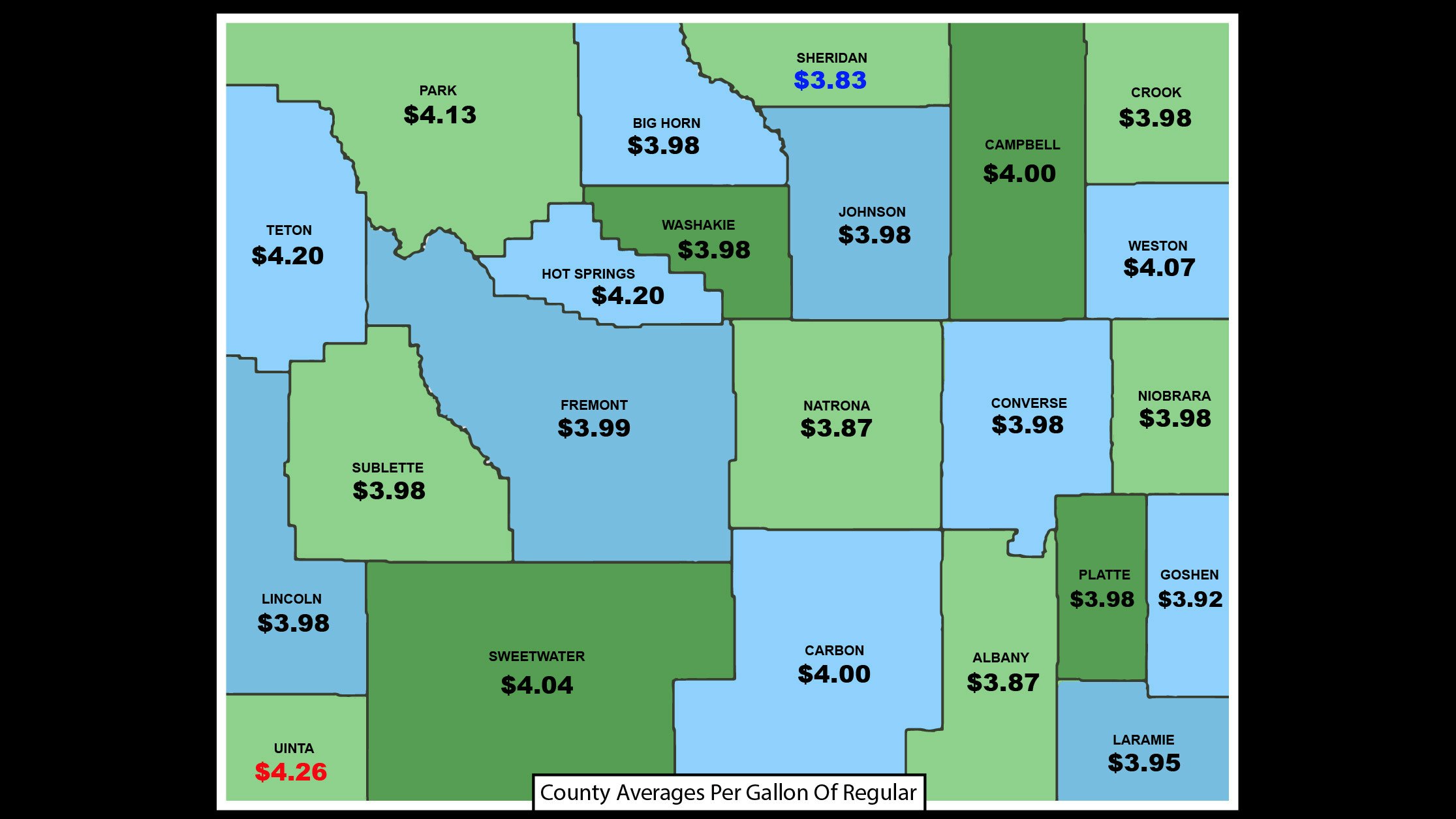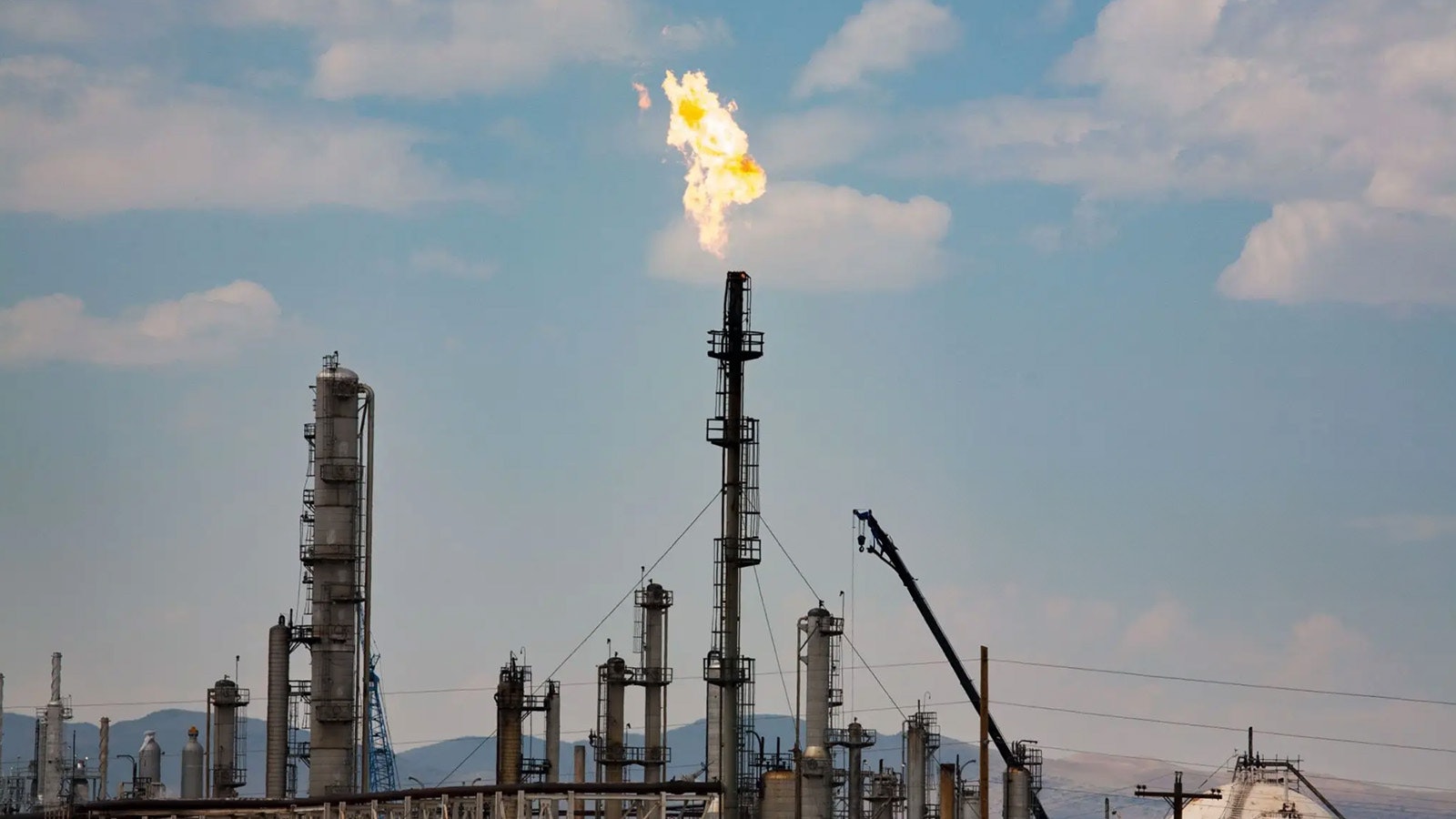Wyoming’s average gasoline price was up 2.2 cents over the previous 24 hours to $4.02 per gallon on Wednesday.
The website GasBuddy.com, which tracks national gas prices, reported Wyoming’s average gas price is up 2.5 cents per gallon over one week ago, and up $1.15 per gallon from one year ago.
Wyoming’s average price for gasoline remained below the national average of $4.237 for a gallon of regular.
* The average price per gallon of regular in each Wyoming county:
Albany $3.87; Big Horn $3.98; Campbell $4.00; Carbon $4.00; Converse $3.98; Crook $3.98; Fremont $3.99; Goshen $3.92; Hot Springs $4.20; Johnson $3.98; Laramie $3.95; Lincoln $3.98; Natrona $3.87; Niobrara $3.98; Park $4.132; Platte, $3.98; Sheridan $3.83; Sublette $3.98; Sweetwater $4.04; Teton $4.20; Uinta $4.26; Washakie $3.98; and Weston $4.07
The biggest movers were Albany, down 35 cents, and Uinta, up 26 cents per gallon.
* The lowest price per gallon, reported in major Wyoming cities:
Basin $4.15; Buffalo $3.95; Casper $3.79; Cheyenne $3.85; Cody $4.10; Douglas $3.78; Evanston $4.38; Gillette $3.87; Jackson $4.18; Kemmerer $4.29; Laramie $3.80; Lusk $3.79; New Castle $3.96; Pinedale $4.05; Rawlins $3.92; Riverton $3.99; Rock Springs $3.93; Sheridan $3.80; Sundance $3.99; Thermopolis $4.17; Wheatland $3.69; Worland $4.08.
The lowest reported average price continues to be $3.69, in Wheatland, while the highest was in Uinta County, with $4.34 per gallon of regular gas.
Tim’s Observations:
Pipe it, truck it, ship it or run it out of town on a rail? The controversy over how to transport natural gas and oil across our country has heated up in the last 18 months, especially with the halting of the Keystone XL pipeline project.
Let’s look at the four ways to transport these petrochemicals. The first is by pipeline. By far, most of these goods are moved by pipeline. All of our natural gas production is moved via pipeline. Seventy percent of crude oil is sent to gulf coast refineries by pipeline as well.
Then there are tankers, which account for 23% of oil transport, with most of that being from oil rigs in the Gulf Of Mexico to refineries. Trucks come in at 4% of shipping and the least used is rail, with only 3% of oil being shipped this way.
Which is the worst for the environment though? Which of these should the environmentalists focus their anger on?
The answer is trucks, by a mile! More accurately, “billion-ton-miles” which is the way they calculate the risk. Basically volume vs. distance of transport.
After trucks, the next most dangerous way to transport oil is by tanker. Just look at the damage even one tanker can do do coastlines. Exxon Valdes come to mind?
Things get a little safer with train. In most mishaps, only a relatively few gallons of oil are spilled.
The clear winner in the risk reward scenario are pipelines. Spills are rare and easy to clean up. The contaminated ground is scooped up and the oil removed and used, while the area of the spill is reclaimed.
*Note: Prices in this report are for reference only. They are gathered the evening before posting, and may not reflect prices that have changed since last posted.





